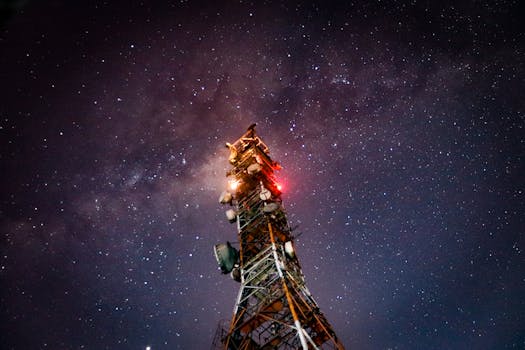Starlink: The Revolutionary Satellite Constellation by SpaceX for Global Internet Connectivity

Starlink: The Revolutionary Satellite Constellation by SpaceX for Global Internet Connectivity
Starlink is a satellite constellation developed by SpaceX to provide high-speed, low-latency internet connectivity across the globe, bridging the digital divide and transforming the way we communicate. With its advanced technology and ambitious goals, Starlink is set to revolutionize the way we access the internet, making it faster, more reliable, and more accessible to people all over the world.
Introduction to Starlink
SpaceX, founded by Elon Musk, has been at the forefront of space technology and innovation. The company’s mission to reduce space transportation costs and enable the colonization of Mars has been well-documented. However, with Starlink, SpaceX is turning its attention to a more immediate problem: providing global internet connectivity. The project aims to launch a constellation of low-Earth orbit (LEO) satellites that will provide high-speed internet access to remote and underserved communities around the world.
How Starlink Works
Starlink’s technology is based on a simple yet powerful concept: using a large constellation of small satellites in LEO to provide internet connectivity. Each satellite is equipped with a phased array antenna that allows it to communicate with multiple users simultaneously, using a technique called beamforming. This approach enables the satellites to provide a high-gain, directional signal that can be used to connect to the internet.
The Starlink system consists of several components, including the user terminal, the satellite constellation, and the ground station. The user terminal is a small, phased array antenna that is installed at the user’s location and communicates with the satellites. The satellite constellation is made up of thousands of small satellites that are launched into LEO, where they orbit the Earth at an altitude of around 550 kilometers. The ground station is responsible for connecting the Starlink system to the global internet backbone.
Benefits of Starlink
Starlink has the potential to revolutionize the way we access the internet, providing several benefits over traditional internet connectivity methods. One of the most significant advantages of Starlink is its ability to provide high-speed internet access to remote and underserved communities. By using a constellation of LEO satellites, Starlink can reach areas that are currently unserved or underserved by traditional internet service providers.
Another benefit of Starlink is its low latency. Because the satellites are in LEO, the distance between the user and the satellite is much shorter than with traditional geostationary satellites. This reduces the latency, or delay, between the time data is sent and received, making it ideal for real-time applications such as video conferencing and online gaming.
Conclusion
In conclusion, Starlink is a revolutionary satellite constellation that has the potential to transform the way we access the internet. With its advanced technology and ambitious goals, Starlink is set to bridge the digital divide and provide high-speed, low-latency internet connectivity to people all over the world. As the project continues to evolve and expand, it will be exciting to see the impact it has on global connectivity and communication.





